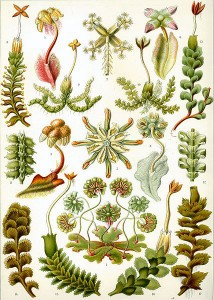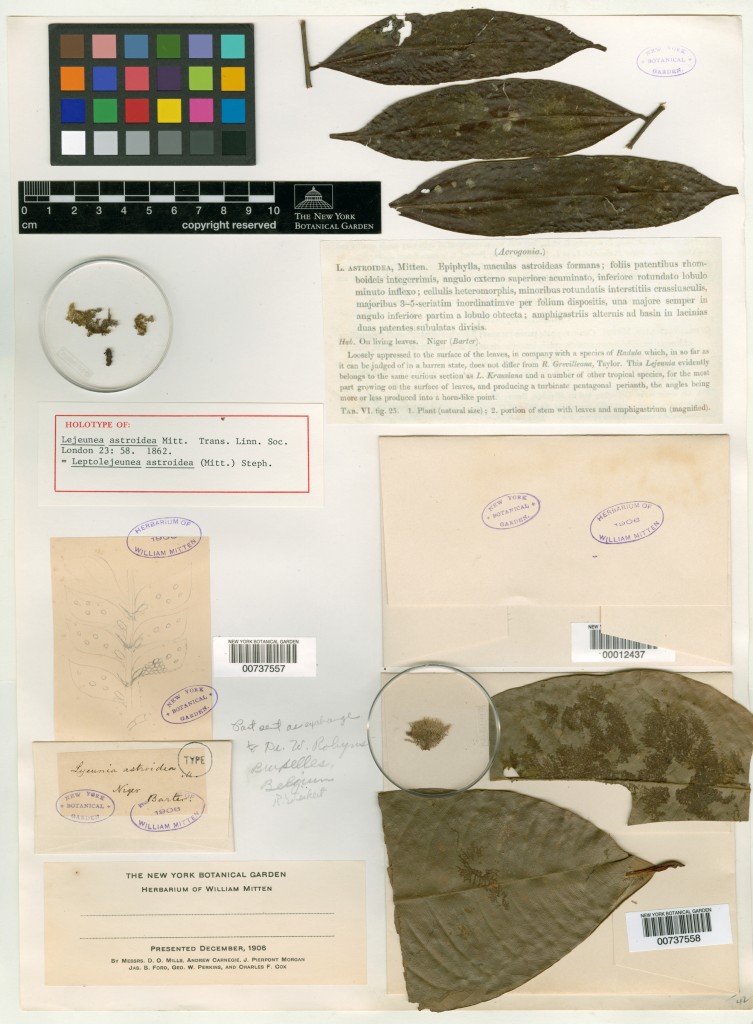Liverworts, Cousins of Mosses
Posted in Interesting Plant Stories on January 8, 2014 by Barbara Thiers
Barbara M. Thiers, Ph.D., is the Patricia K. Holmgren Director of the William and Lynda Steere Herbarium and Vice President for Science Administration at The New York Botanical Garden.

Alma Whittaker, the heroine of Elizabeth Gilbert’s recent novel The Signature of All Things, has a passion for science, especially botany, and most especially mosses. I share these passions although I have always been more captivated by liverworts, the cousins of mosses.
Mosses and liverworts were among the first groups of plants that evolved to live on land rather than in water. Because they lack the internal mechanisms for conducting water that most land plants have, they remain small so their leaves can absorb water directly from the surfaces on which they grow. Mosses and liverworts both reproduce by single-celled spores rather than seeds.
While most mosses are fairly uniform in structure, consisting of a stem with simple leaves spiraling around it, liverworts are unfettered by structural conformity. As shown in the illustration, their forms range from ribbon-like to leafy, and the leaves can be folded and divided in many ways. They release their spores by means of stalked structures that look like umbrellas or tiny brown flowers.
In North America, liverworts are smaller and rarer than mosses, but they are conspicuous and profuse in very wet habitats, such as montane tropical forests in the Andes. Alma’s father Henry would have seen them on his trip to collect quinine in Peru.
Although Henry was focused on exploration for economic gain, other plant explorers at the time were collecting all aspects of the biota, including mosses and liverworts, for purely scientific purposes. The William and Lynda Steere Herbarium here at The New York Botanical Garden houses one of the world’s most extensive collections of mosses and liverworts from such expeditions, and these are consulted regularly by researchers who either visit the Steere Herbarium in person or who view digital representations of specimens through the C. V. Starr Virtual Herbarium.

The nucleus of the Steere Herbarium liverwort collection is the herbarium of William Mitten, who described thousands of species of mosses and liverworts from all over the world, although he rarely left his home in England. Mentioned in passing in The Signature of All Things, Mitten was the father in law of Alfred Russell Wallace, who is featured in the latter part of the story. The specimen shown above represents a delicate little plant that grows on the surfaces of living leaves. It was collected in Africa by Charles Barter, who died of dysentery during the expedition on which this specimen was found. He would have been a contemporary of Alma’s.

